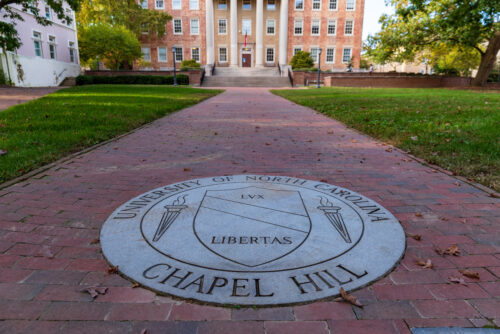In “The Second Mountain,” David Brooks imagines a healthier and happier society—but he fails to acknowledge or understand the robust conversation about strengthening civil society already taking place.
Twenty years ago, David Brooks was a sharp and funny observer of class in America. His book Bobos in Paradise, as well as articles for The New Yorker and The Atlantic, marked him as someone who precisely skewered the pretensions of the rich.
But then in 2003 he became a columnist for the New York Times. He largely stopped being a journalist and became a full-time pundit. Greatness was thrust upon him, and all the applause—from public television fans, acolytes of the New York Times, devotees of the Aspen Institute—caused his head to swell.
As his ego inflated the quality and originality of his ideas declined. I thought The Road To Character had its moments. But The Second Mountain, unfortunately, is a shallow and empty book.
Brooks’s book, at least theoretically, should be of interest to people worried about strengthening civil society. His goal is to end what he sees as the “hyper-individualism” infecting America and replace it with a creed he calls “relationism,” which is about how people interact with each other. He thinks people are at their best when they are helping others: “A good life is a symbiotic life—serving others wholeheartedly and being served wholeheartedly in return,” Brooks writes.
The Second Mountain is divided into three parts. In the first part, Brooks wants to be the guidance counselor you never had in high school. The second part is about what makes a good marriage, which is a conspicuous section in its own right, given Brooks’s history.
It is in the third part that Brooks discusses civil society. He wants a world where neighbors once again know and care for each other, where neighbors offer help when you need it and you offer help when you can. The goal is to create a community with “a thick set of relationships” where “people extended to neighbors the sort of devotion that today we extend only to family.”
But how do we get this sort of “rich community?” For over sixty years, conservatives have been debating and arguing about civil society, in the works of Russell Kirk, Robert Nisbet, Richard Cornuelle, Peter Berger, Fr. Richard John Neuhaus, William Schambra, Robert Woodson, Marvin Olasky, and many others. Most recently, the energy behind the writers of Front Porch Republic is in part based on a desire to strengthen and make distinctive the local communities where the writers live.
Except for a glancing reference to Robert Nisbet’s The Quest for Community, Brooks completely ignores the deep and enduring discussion on the right about strengthening communities. That’s because Brooks, possessor of a mighty mind, wants to convince his readers that he has discovered all by himself the arguments conservatives have been having about the organizations that provide buffers between the individual and the state.
Brooks has spent some time with an Aspen Institute organization called “The Weavers” which honor people who help make connections. I’m sure this group does admirable things, but Brooks makes The Weavers into a unique organization, and ignores all the other groups who try to strengthen communities. For example, Brooks doesn’t mention the Philanthropy Roundtable, even though his wife Anne Snyder worked for the Roundtable for several years.
There is one paragraph in The Second Mountain about grantmaking foundations. This is how he says foundations work:
“In most cases, you have a bunch of organizations who want to do good. They apply to a local foundation or government agencies and compete for grants. A few get chosen, and they go off and do their thing. One donor, one organization, one problem, one program … You wind up with a community in which a random spray of programs are competing for a smallish pot of money.”
But the best foundations—the Bradley Foundation in Milwaukee, the Connelly Foundation in Philadelphia, the Daniels Fund in Denver—are rooted in their communities, and part of what program officers do is make connections between worthy nonprofits in a city. Donor intent matters not just because of a donor’s ideological beliefs but because donors often want to help the cities where their homes and businesses reside. One reason why Rebecca Rimel was such a bad leader of the Pew Charitable Trusts was not just that she moved the organization to the left, but that she mostly severed the ties to Philadelphia and the Philadelphia nonprofits the Pews cherished.
Brooks is also convinced that the U.S. is suffering from an “epidemic” of loneliness, but as I have noted before, a paper from the Social Capital Project shows that the idea that there is a “loneliness epidemic” is based on bad social science.
The narrowness and thin research of The Second Mountain render it a shallow and unpersuasive look at what needs to be done to strengthen civil society. This is an important conversation, but Brooks fails to carry the conversation well.







In March 2021, David Brooks resigned his position as an executive director of the Aspen Institute in charge of The Weavers.
In March 2021, BuzzFeed reported that David Brooks was drawing a salary from the Aspen Institute for his work running The Weavers and that he had failed to tell the NEW YORK TIMES that he was being paid by Aspen, even though he had written about The Weavers in several columns.